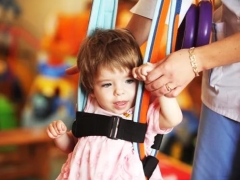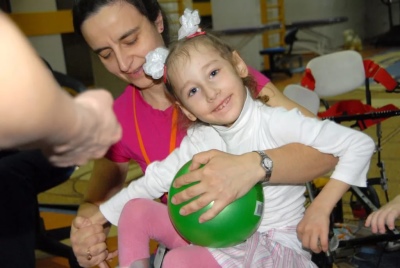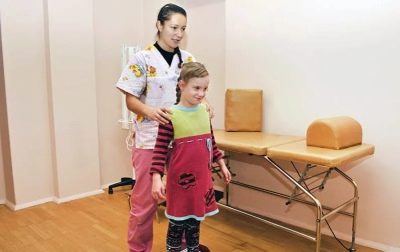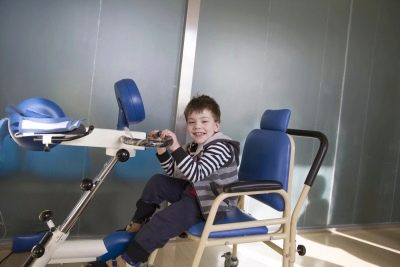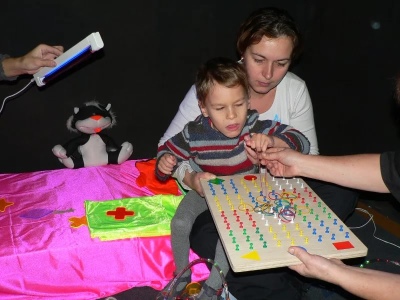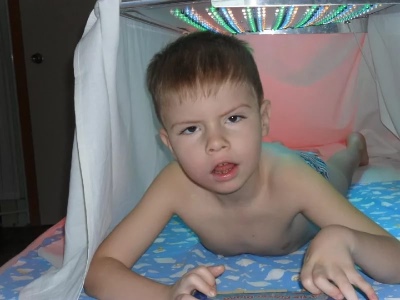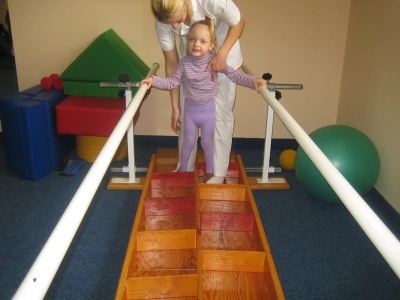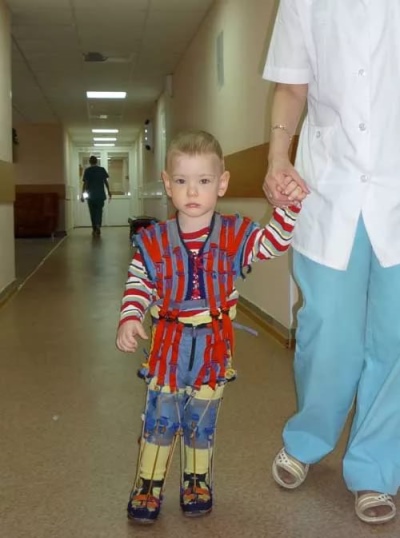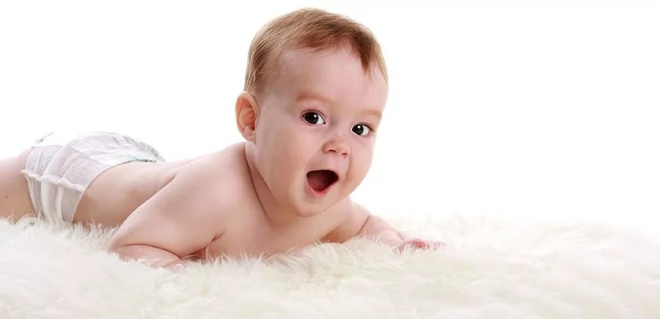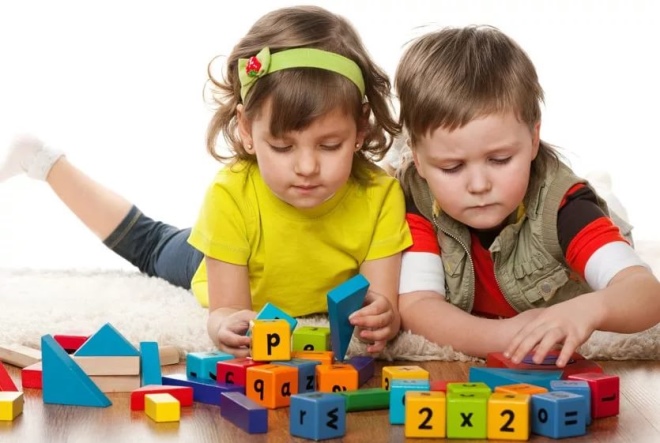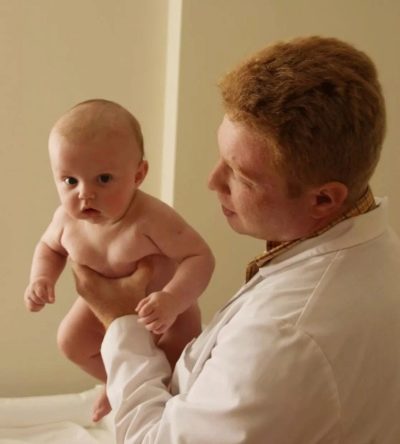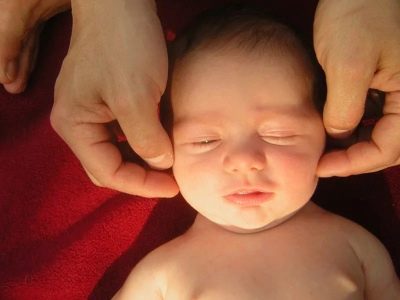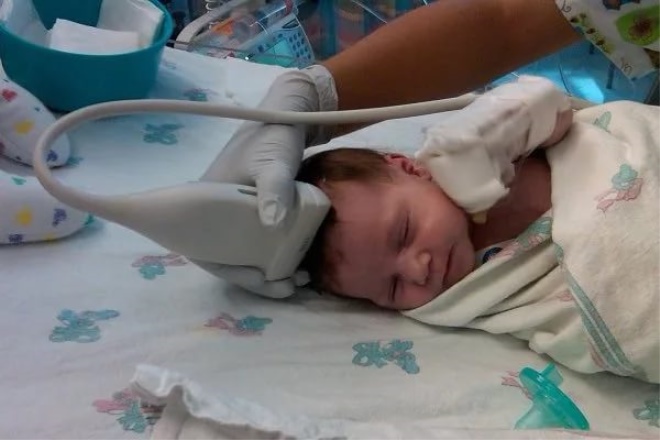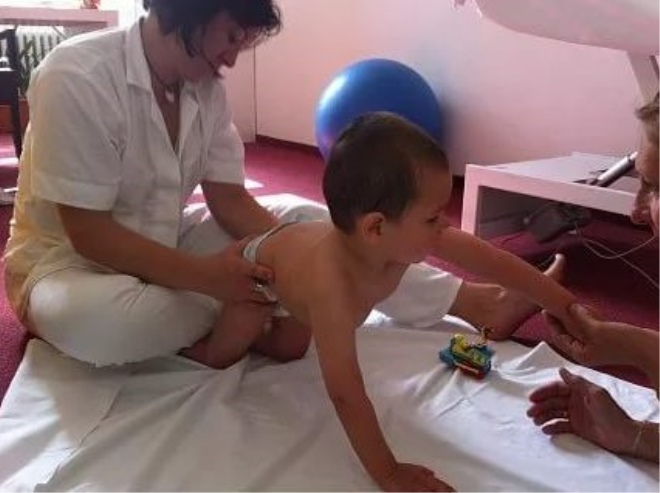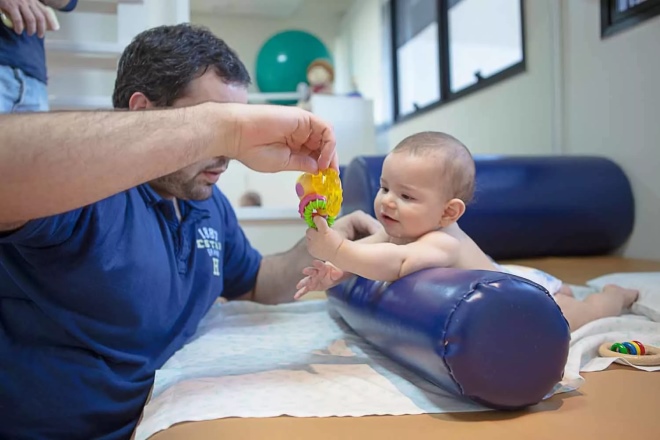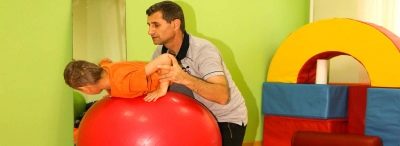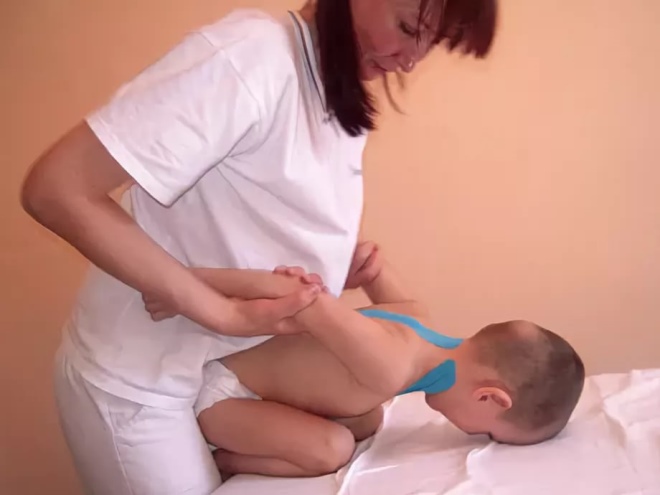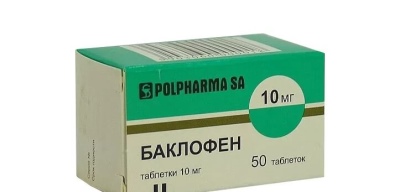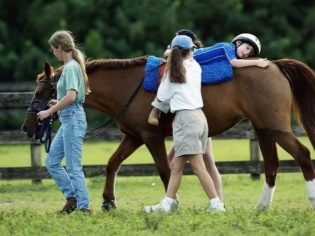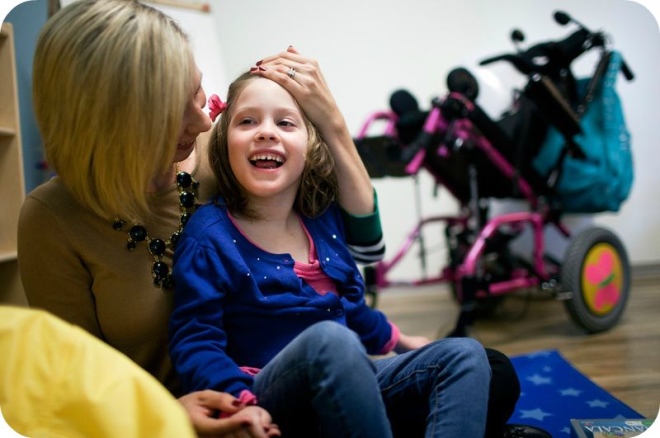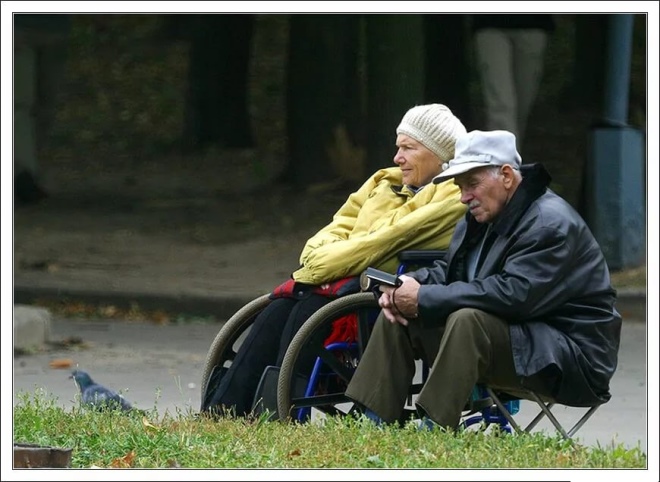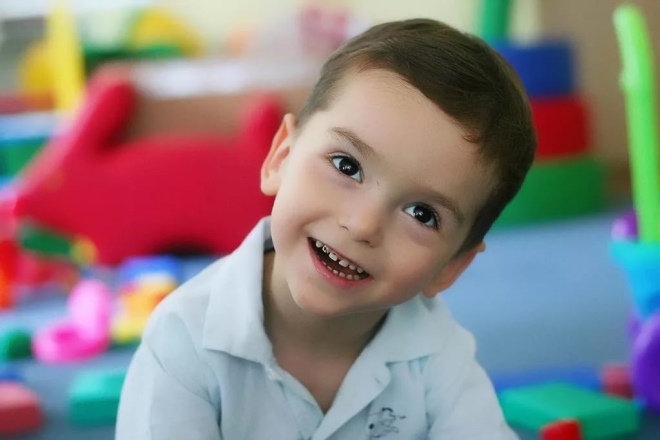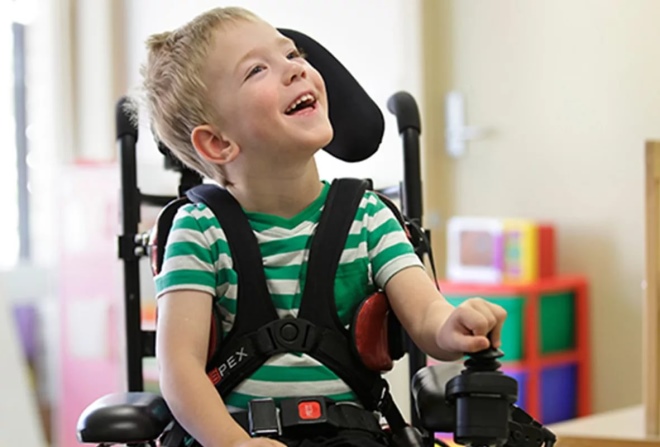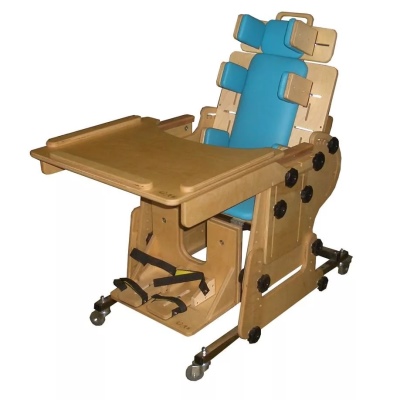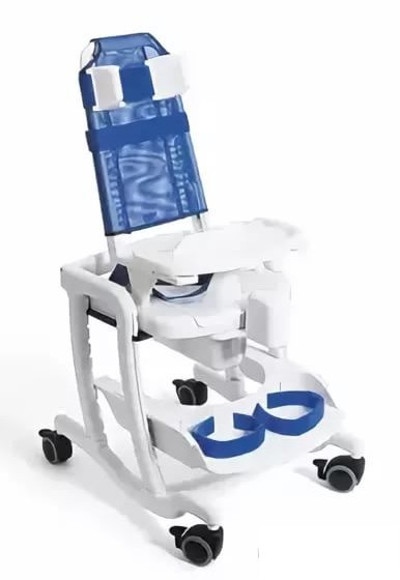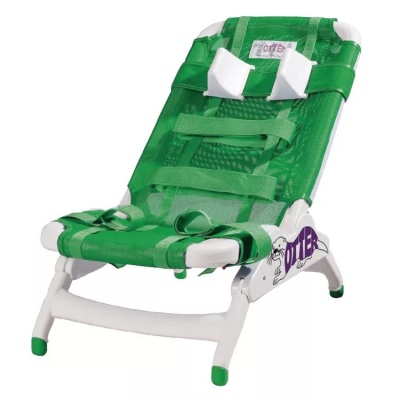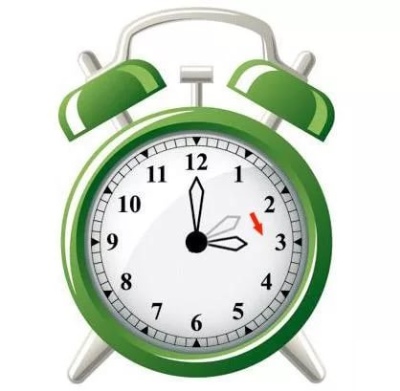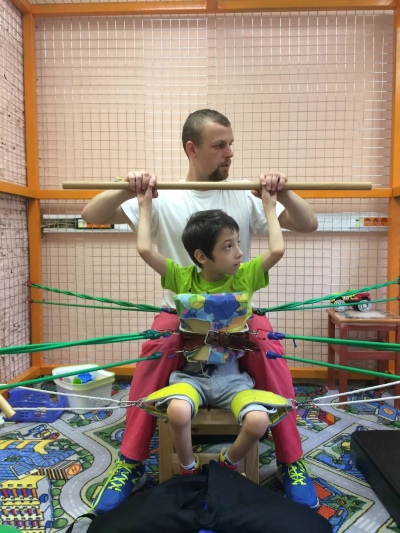Symptoms and treatment of cerebral palsy
Cerebral palsy is one of the most difficult diagnoses that parents of infants can hear from doctors. If you want to understand what the disease is, what are the symptoms and treatment, read this article.
Cerebral palsy - what is it?
Cerebral palsy is not a specific disease with specific symptoms. This is a whole group of pathologies of the motor system, which have become possible due to serious disorders in the central nervous system. Problems with the musculoskeletal system can not be considered primary, they always follow the brain lesions.
Anomalies in the cerebral cortex, subcortex, capsules and brainstem most often occur during the prenatal development of a baby. The exact causes that lead to cerebral palsy in newborns are still being investigated by scientists. However, physicians (despite the mass of hypotheses) seriously consider two periods when global changes in the brain can lead to severe pathology - the period of pregnancy and the period immediately before, during and immediately after childbirth.
Cerebral palsy does not progress, the stage of damage and the restriction of motor functions do not change. The child grows, and some disorders become simply more noticeable, so people mistakenly believe that cerebral palsy can develop and be complicated.
The group of diseases is quite common - focusing on statistics, it can be noted that out of a thousand children, two are born with some form of cerebral palsy. Boys are almost one and a half times more likely to get sick than girls. In half of the cases, in addition to a violation of motor functions, there are various mental and intellectual disorders.
Pathology was noticed in the 19th century. Then the British surgeon John Little took up the study of birth injuries. For exactly 30 years, it took him to formulate and present to the public the idea that the oxygen deficiency that the fetus experiences at the time of its birth can turn into a paresis of the limbs.
At the end of the 19th century, Canadian doctor Osler came to the conclusion that cerebral abnormalities are still connected with the cerebral hemispheres, and not with the spinal cord, as Briton Little stated before him. However, medicine didn’t convince Osler too much, and Little’s theory was officially supported for a very long time, and birth trauma and acute asphyxia.
The term "cerebral palsy" was introduced by the famous Dr. Freud, who was a neurologist and studied the problem in his own practice. He formulated the intrauterine damage of the child’s brain as the main cause of the pathology. He was the first to make a coherent classification of various forms of this disease.
Causes
Modern doctors believe that cerebral palsy can not be considered a hereditary disease. Lesions of the musculoskeletal system and problems with mental development become possible in the event of improper development of the brain of the crumbs during the period of mom's pregnancy, as well as the banal underdevelopment of the brain.
If a child was born into the world much earlier than expected, then the risk of cerebral palsy is several times higher. This is confirmed by the practice - many children with disorders of the musculoskeletal system and the established diagnosis of cerebral palsy were born very premature.
However, prematurity itself is not terrible, it creates only prerequisites for the development of violations.
The likelihood of cerebral palsy is usually influenced by other factors, which in combination with premature birth and lead to the disease:
- “Mistakes” during the appearance and development of brain structures (first trimester of pregnancy);
- chronic oxygen starvation of the fetus, prolonged hypoxia;
- intrauterine infections that the baby has suffered during his stay in the womb, most often caused by herpes viruses;
- severe rhesus-conflict between mother and fetus (occurs with a negative Rh of the mother and a positive Rh of the child), as well as severe hemolytic disease of the child immediately after birth;
- brain injury during and immediately after delivery;
- infection of the brain immediately after birth;
- toxic effects on the child's brain with heavy metal salts, poisons, both during pregnancy and immediately after birth.
However, it is not always possible to establish the true cause of the child’s illness. If only because it is impossible to understand at what stage of the development of the embryo and fetus that very total “mistake”, there is no way, as well as to prove that brain damage is the result of the conflict of Rh factors. Some children with cerebral palsy have not one, but several reasons for the development of the disease.
Forms and their characteristics
Since cerebral palsy is a group of violations, there is a sufficiently detailed classification of the forms of each type of lesion. Each form of cerebral palsy has certain signs and manifestations:
Hyperkinetic (dyskinetic)
This form is most often diagnosed in children who in utero suffer an attack of antibodies associated with Rh-conflict. When they are born, the development of hemolytic disease of the newborn (HDN) plays its role, its nuclear-icteric form is especially dangerous. At the same time, the subcortex of the brain is affected, as well as the auditory analyzers.
The child suffers from hearing impairment, he has uncontrolled eye twitching. He makes involuntary movements. Increased muscle tone. Paralysis and paresis can develop, but are not considered mandatory. Children with this type of cerebral palsy are poorly oriented in the surrounding space, they have difficulties with intentional actions of the extremities - for example, it is difficult for a child to pick up this or that object.
With all this, the intellect suffers to a lesser extent than with some other types of cerebral palsy. Such children (with due efforts on the part of parents and teachers) are socializing well, they are able to go to school, many manage to enter the university, get a profession and find a job.
Ataxic (atonic-astatic)
This type of cerebral palsy is associated with damage to the cerebellum, frontal lobes of the brain and the path between the cerebellum and the frontal lobes. Such damage is most often the result of chronic severe fetal hypoxia, abnormal development of these brain structures. Birth injuries of the frontal lobes are often referred to as the probable cause.
In this form, the muscle tone of the child is reduced. When moving the muscles do not agree with each other, so the child is not able to make targeted movements. Balance due to reduced muscle tone almost does not work. Trembling of the limbs may be observed.
Such children are most susceptible to epileptic seizures. At an early age there are problems with the development of vision and speech.With proper care, systematic studies, and adequate therapy, children with an atanic-astatic form of cerebral palsy can demonstrate certain low intellectual abilities that allow them to only slightly master the basics of speech and become aware of what is happening. In more than half of the cases, speech remains undeveloped, and the children themselves show no interest in this world.
Spastic tetraplegia (spastic tetraparesis)
This is the most severe form of cerebral palsy. It occurs as a result of damage to the brain stem, both hemispheres or the cervical spine. The most likely causes are fetal hypoxia, mechanical asphyxia during the entanglement of the cervix, hemorrhage in the brain (with lesions of toxins, for example, or infection of the brain). Often the cause is a birth trauma in which the cervical spine suffered.
In this form of cerebral palsy, the motor activity of all four limbs (both arms and legs) is impaired to approximately the same degree. Since the arms and legs cannot move, their inevitable and irreversible deformation begins.
The child experiences muscle and joint pain and may have difficulty breathing. More than half of children with such cerebral palsy have impaired cranial nerves, resulting in strabismus, blindness, and hearing impairment. In 30% of cases, microcephaly is noted - a significant decrease in the volume of the brain and skull. More than half of patients with this form suffer from epilepsy.
Unfortunately, these children cannot serve themselves. There are also big problems with learning, because the intellect and psyche suffer to a great extent, and the child has not only the opportunity to take something with his hands, he has no banal motivation to take something or do something.
Spastic diplegia (Little's disease)
This is the most common form of cerebral palsy, it is diagnosed in three out of four sick children. When ailment is affected, there are usually some parts of the white matter of the brain.
Spastic lesions are bilateral, but legs, rather than hands and face, are more affected. The spine is very quickly deformed, mobility of joints is limited. Muscles contract uncontrollably.
The intellect, mental development and development of speech suffers quite clearly. However, this form of the disease is subject to correction, and the child with Little's disease can be socialized - however, the treatment will be long and almost constant.
Hemiplegic
This is one-sided spastic defeat, which most often affects the handle, and not the leg. This condition becomes possible as a result of hemorrhage in one hemisphere of the brain.
Socialization of these children is possible if their intellectual abilities are large enough. Develop such kids with a large gap from their peers. They are characterized by delayed mental and mental formation, problems with speech. Sometimes epileptic seizures occur.
Mixed
In this form of pathology, brain dysfunction can be observed in a variety of structures and areas, so the probability of a combination of disorders of the musculoskeletal system is quite real. Most often revealed a combination of spastic and dyskinetic forms.
Unspecified
Such a form of the disease is indicated if the lesions are so extensive that it is not possible to identify specific parts of the brain in which an abnormality has occurred (malformation or traumatic impact).
Symptoms and signs
It is not always possible to see the first signs of cerebral palsy in an infant even at the maternity hospital, although serious brain disorders are noticeable from the first hours of a child's life. Less serious conditions are sometimes diagnosed somewhat later.This is due to the fact that with the growth of the nervous system, complications of connections in it, violations of the motor and muscular apparatus become apparent.
There are alarming symptoms that should make parents alert and consult a doctor. These symptoms are not always signs of cerebral palsy, quite often they are indicative of neurological disorders, in no way connected with cerebral palsy.
However, they can not be ignored.
Parents should be suspicious if:
- the child does not fix the head well, cannot hold it even at 3 months;
- the muscles of the crumbs are weak, because of which the limbs are like "noodles";
- the child does not roll over on its side, does not crawl, cannot fix its gaze on the toy and does not take the toys into the pens, even if it already has 6-7 months;
- the unconditioned reflexes with which each child is born (and which normally should disappear by half a year) continue to persist even after 6 months;
- limbs spastic tense and not relaxing, sometimes spasms occur "attacks";
- a child has seizures;
- visual impairment, hearing loss;
- chaotic movements of the limbs, uncontrolled and accidental (this symptom cannot be assessed in newborns and children in the first month of life, since for them such movements are a variant of the norm).
The most difficult to determine signs of cerebral palsy in children under the age of 5 months. This task is difficult even for an experienced doctor. He may suspect pathology, but he has no right to confirm it until the child is 1 year old. According to one or several symptoms from the above list, it is impossible to suspect cerebral palsy, as well as mistakenly mistaking the symptoms of some similar diseases for cerebral palsy.
Parents should be very careful, because if the treatment of some forms of pathology start early, before 3 years, the results will be excellent and the child will be able to lead a fully fulfilling life.
Stages of the disease
In medicine, there are three stages of the disease. The first (early) begins at about 3-5 months of age, the initial stage is a disease identified at the age of six months to 3 years, and they say about the late stage if the child is already 3 years old.
The smaller the stage, the more favorable the prognosis for cure. Even if the child cannot be completely cured, it is quite possible to reduce the negative manifestations to the maximum. The children's brain (even the victim of injuries or malformations) has a high capacity for compensation; this can and should be used in the correction of disorders.
Diagnostics
Genetic diseases, which are quite independent diseases, are taken for cerebral palsy quite often, as a result of which children are diagnosed that do not correspond to reality. Modern medicine is very developed, but the symptoms associated with the pathology of the brain, are still insufficiently studied.
Identify the disease is usually possible closer to 1 year. If a child does not sit at this age, does not crawl, shows other progressive signs of disorders of the nervous system, the doctor prescribes an MRI.
Magnetic resonance imaging is the only more or less reliable study that allows to judge about the presence of cerebral palsy - and even to establish its supposed form.
For young children, the procedure is carried out under general anesthesia, since the capsule for taking pictures should lie motionless for quite some time. Children can't do that.
With genuine cerebral palsy, MRI layered images show atrophy of the cortical and subcortical areas of the brain, reducing the density of white matter. In order to distinguish cerebral palsy from a huge list of genetic syndromes and conditions similar in manifestation, an MRI of the spinal cord can be assigned to a child.
If the child has convulsions, the doctor prescribes electroencephalography.Ultrasound of the brain is only relevant for newborns, this technique is sometimes used in maternity hospitals if cerebral palsy is suspected.
The reasons for the ultrasound study may be such factors as the prematurity and low weight of the child, the established fact of intrauterine infection, the use of special forceps by the midwives, hemolytic disease, low Apgar score on the newborn (if the child “scored” at birth no more than 5 points) .
At the earliest stage after birth, symptoms of very severe forms of cerebral palsy can be visually seen. It is also important to distinguish them and separate them from other similar pathologies. Doctors include the sluggish sucking reflex, the absence of spontaneous limb movements, hydrocephalus among the alarming symptoms of a newborn.
Treatment
The treatment does not aim at restoring the functioning of the affected parts of the brain, since it is almost impossible. Therapy is aimed at ensuring that the child can acquire skills and abilities that will help him become a member of society, get an education, serve himself.
Not every form of cerebral palsy is subject to such correction, since the severity of brain damage in them is different. But in most cases, doctors and parents jointly still manage to help the child, especially if the treatment began in a timely manner, until the baby is 3 years old. There are the following options:
Massage and Bobat Therapy
Motor functions are restored sequentially, for this purpose, therapeutic massage and Bobat therapy are applied. This method was founded by spouses from Britain, the therapists Berta and Karl Bobath. They proposed to influence not only the damaged limbs, but also the psyche of the child. In a complex psychophysical impact gives excellent results.
Such therapy allows the child to develop with time not only the ability to move, but also to do it quite consciously. Bobat-terpy is contraindicated only for children with epilepsy and convulsive syndrome. All the rest of this method is recommended.
An exercise therapy specialist selects an individual program for each baby, since Bobat therapy in principle does not provide for a unified approach and a specific scheme. Depending on how and how the limbs are affected, at the first stage the doctor does everything so that the body “forgets” the wrong position. For this purpose, they use relaxing technologies and massaging exercises.
At the second stage, the specialist makes the correct physiological movements with the limbs of the child so that the body “remembers” them. At the third stage, the child begins to motivate (in a game or another form) to independently perform the very “right” movements.
Bobat therapy allows the child to let him later, but to go through all the natural stages of development - standing on all fours, crawling, sitting, grabbing hands, resting on legs. With due diligence in classes, parents and doctors achieve excellent results - the “correct” positions are perceived by the child’s body as habitual and become an unconditioned reflex.
Nutrition
Proper nutrition is very important for a child with cerebral palsy, since many babies with this diagnosis have associated pathologies of internal organs and the oral cavity. The digestive system suffers most often.
There is no special diet for children with cerebral palsy. When prescribing food, the doctor takes into account the development of sucking and swallowing reflexes, as well as the amount of food that the child “loses” in the process of eating - it sheds, cannot swallow, belches.
From the diet of children with this diagnosis completely eliminate coffee and carbonated drinks, smoked fish and sausage, canned and pickled foods, as well as spicy and salty dishes.
Nutritional supplements are welcome (regardless of age), as they provide a more balanced diet. If a child refuses to eat or cannot do this due to the lack of swallowing reflex, a special probe can be installed.
Wojta therapy
The method that bears the name of its creator - Czech doctor Vojta. It is based on the formation in children of motor skills characteristic of their age. To do this, the foundation of the exercises put two starting skills - crawling and turning. Both in a healthy child are formed at the level of reflexes.
In a child with lesions of motility and central nervous system, they have to be formed “by hand”, so that later they become a habit and give a start to new movements - sitting, standing and walking.
Methods of parents can teach vojta therapist. All exercises are conducted independently, at home. The clinical efficacy of this type of exposure (as well as Bobot therapy) has not been proven to date, but this does not prevent medical statistics from being regularly updated with positive numbers of improved conditions for children with cerebral palsy.
Medicines
There is no special rate for pills and injections, since there is no such medicine that would help to cure cerebral palsy completely. However, some drugs significantly alleviate the child’s condition and help him rehabilitate more actively. Not every kid with such a pathology needs their use, the practitioner determines the appropriateness of the use of drugs.
To reduce muscle tone often prescribed "Baclofen", "Tolperisone". Reduces muscle spasticity and botulinum toxin preparations - "Botox", "Kseomin". After the introduction of "Botox" in spastic muscle for 5-6 days there is a visible relaxation of the muscles.
This action sometimes lasts from several months to a year, after which the tone usually returns. But the motor skills acquired during this time remain, therefore botulinum toxins are included in the Russian standard for treating cerebral palsy as a means of complex therapy.
For epileptic seizures, the child is prescribed anticonvulsants drugs, to improve cerebral circulation is sometimes prescribed nootropic drugs.
Some disorders in cerebral palsy are quite successfully corrected by surgery. Tense ligaments and tendons are operated on, muscle-tendon plasty is performed, surgeons are perfectly able to eliminate the stiffness and limited movement of the joints that accompany some forms of the disease.
Other methods
Very good results show treatment of children with cerebral palsy with pets. Animal therapy (this is the international name of the method, not always used in Russia) allows the child to socialize faster, stimulates intellectual and mental functions. Most often, parents of a child with such a diagnosis are advised to have a dog or cat. In this case, the child should communicate and be close to his pet as often as possible.
Very widespread and hippotherapy - treatment with the help of horses. In many Russian cities there are clubs and centers where kids with cerebral disorders engage in horse riding under the supervision of experienced specialists - hippotherapists.
During a person’s riding in a saddle, all muscle groups are involved, and attempts to maintain balance are reflex ones, that is, a signal from the brain to set the muscles in motion is not at all necessary. During classes, children develop useful motor skills.
The useful impulses that the horse sends to his rider while walking are a natural massage. During the procedure, the child is placed in the saddle, pulled out along the horse’s spine, and squatted, trying to load all the “problem” parts of the body and limbs.
Emotionally, children perceive a living horse much better; emotional contact is precisely the factor that makes it possible to create motivation in a child with cerebral palsy.
If parents and children do not have the opportunity to communicate live with such an animal, then a hippo training apparatus will come to the rescue, in which all movements are monotonous, the same.
Methods with unproven efficacy
Quite often, children are prescribed vascular drugs. "Cerebrolysin», «Actovegin" other, classified as nootropic. Although their use is widespread, it causes great doubts, since clinical trials have not shown a significant change in the condition of children with cerebral palsy after a course of treatment with nootropic drugs.
Quite often on the Internet, parents who are constantly looking for new methods and ways to defeat a terrible disease, stumble upon modern homeopathic remedies that promise "improved brain activity." None of these funds today has no official approval from the Ministry of Health, their effectiveness has not been proven.
Treatment of Cerebral Palsy stem cells - another commercial and very profitable step of manufacturers of drugs with unproven action. Clinical trials have shown that stem cells cannot restore movement disorders, since they do not have any effect on the connection between psyche and motility.
Experts believe that there is little use for cerebral palsy and from manual therapy. Nobody diminishes its values, with a number of other pathologies during the recovery period after injuries, the technique gives positive results. However, it is precisely in cerebral palsy that its use is impractical.
Forecasts
With the current level of medicine, the diagnosis of "cerebral palsy" is not a sentence. Certain forms of the disease are amenable to complex therapy, which includes the use of medications, massage, rehabilitation techniques, and work with a psychologist and a correctional teacher. Even some 50-60 years ago, children with cerebral palsy rarely survived to adulthood. Now life expectancy has changed in a big way.
On average, with treatment and good care, a child with cerebral palsy today lives to 40-50 years old, and some have managed to overcome the threshold of retirement age. It is quite difficult to answer the question of how many people live with such a diagnosis, because much depends on the degree and severity of the disease, its form and the characteristics of the course of a particular child.
A person with cerebral palsy is subject to premature aging, his actual age is always lower than the biological one, because deformed joints and muscles wear out faster and create prerequisites for early aging.
Disability
Disability in cerebral palsy is issued on the basis of the form and severity of the disease. Children can count on the status of "disabled child", and after their age - get the first, second or third disability group.
In order to receive a disability, the child must undergo a medical and social examination, which should establish:
- form and degree of cerebral palsy;
- the nature of the damage to the motor function (on one or two sides, whether there are skills in holding objects, relying on legs);
- the severity and nature of speech disorders;
- severity and degree of mental impairment and mental retardation;
- the presence of epileptic seizures;
- the presence, as well as the degree of hearing loss, vision.
Children with severe disabilities are usually given the category "disabled child", which, before the age of 18, needs to be reconfirmed. Parents of such a child will be able to count on receiving the necessary child of the means of rehabilitation and visiting sanatorium at the expense of the federal budget.
Development features
In infants, cerebral palsy has almost no clear manifestations (at least up to 3-4 months). After this, the baby begins to rapidly lag behind in development from its healthy peers.
Children with cerebral palsy are difficult to coordinate movements.Becoming older, the child will try to avoid them. If at the same time intellectual abilities are preserved, then the kids grow up “slowed down”, they do everything very slowly, slowly.
Children with easy cerebral palsy are rarely aggressive and evil. On the contrary - they are characterized by an incredible attachment to their parents or guardians. She can reach panic if the baby is afraid to be alone.
Some forms of cerebral palsy are so “deform” the personality that a child can become reticent, embittered, aggressive (for no apparent reason). However, it would be wrong to write off everything only on the form of the disease. A very important role in shaping the character of the child is played by his parents. If they are positive, kindly, encourage the achievement of the offspring, then the likelihood of getting an aggressive child is minimized.
At the physical level, children with cerebral palsy in the first place have a lack of understanding of what should be the correct body position in space. Since an erroneous signal comes from the affected brain, the muscles accept it incorrectly, hence the inability to do something consciously and spontaneous movements.
The reflexes (Moro, prehensile, and others) that are common to all newborns disappear in order to give way to new skills. In children with cerebral palsy, these innate reflexes are often preserved, and this determines the complexity of learning new movements.
Many children with cerebral palsy are characterized by insufficient body weight, minimal subcutaneous fat layer, weak (often blackened and twisted) teeth. Individual features of development are determined by a single factor - the preservation of intellectual potential. If it is available, then much can be corrected and corrected.
Rehabilitation Tools
Special funds that facilitate the life of a child with cerebral palsy can be obtained from the federal budget. True, this is possible only if the doctor has entered their exact list on the rehabilitation card, and the ITU commission, when confirming the disability, recorded a list of the necessary funds for rehabilitation.
All devices are divided into three large groups:
- hygienic devices;
- moving arrangements;
- devices for child development, training and medical procedures.
In addition, the child may need special furniture adapted for children with cerebral palsy, as well as shoes and dishes.
Hygiene
Such means include chairs, toilets and chairs for swimming in the bathroom. In order not to carry the child to the toilet (especially if it is already large and heavy), a toilet chair is used, which consists of a chair equipped with a removable sanitary-purpose tank. The chair also provides wide comfortable straps for secure baby.
The bathing chair has an aluminum frame and a seat made of waterproof material. On it, parents will be able to place the child comfortably and calmly bathe him. Tilt adjustment allows you to change the angle to change the position of the body, and seat belts securely hold the child in the bathing process.
Mobility
This category includes all devices that allow the child to move in space. These are wheelchairs, walkers, parapodium, verticalizers, walkers-rollators.
A child who cannot move independently needs a wheelchair, and not one. To move around the house using indoor strollers, and for walking - strollers. Walking option (for example, "Stingray") more lightweight, sometimes equipped with a removable table. Manufacturers of wheelchair manufacturers offer very good options, but their price is quite high.
If a child has learned to walk, but cannot (or cannot always) keep balance, he needs a walker. Well-chosen walkers can help in the process of learning to walk.In addition, they train the coordination of movements. Usually walkers look like a frame on four wheels and a safety device. The wheels can not roll back, it completely eliminates the rollover.
A more complex variant of the walker is the parapodium. This is a dynamic verticalizer that will allow the child not only to stand, but at the same time be engaged on the simulator. In such an orthosis, the child can move independently. However, the parapodium is suitable only for children who have retained their intellectual functions; it is better for everyone else to use the usual static verticalizer.
Verticalizers fix the child in the popliteal space, as well as the feet, on the hips and on the belt. There may be a slight forward bend. If the model is equipped with a table, then the child can even play there.
Devices for child development
Such devices include special furniture, tables and chairs, some verticalizers, splints, a bicycle, exercise equipment and sophisticated orthopedic shoes. All furniture is equipped with body positioners, seat belts. It can be a single object (chair or table) or a whole set, where each element is combined and combined with another.
A special bicycle for children with cerebral palsy is not only a toy, but also a means of active rehabilitation. He has a special (unusual for most people) design. He is always three-wheeled, and his wheel is not connected to the pedals. Therefore, turning the steering wheel in the wrong direction does not turn the wheels in a given direction.
This bike is equipped with mounts for hands, legs and feet, as well as a cane that allows parents to push the device with the child forward if the child cannot pedal on his own.
Using a bicycle makes it possible to prepare the child well for learning to walk, trains the muscles of the legs, alternating movements.
Simulators
The modern medical industry has made great strides forward, and for children with cerebral palsy today not only the most common exercise bikes are available, but also real exoskeletons that will take all the "work" of the muscles on themselves. In this case, the child will make movements together with the exoskeleton, due to which a reflex movement will begin to form.
The most popular in Russia is the so-called Adele costume. This is a whole system of support and load flexible elements. Classes in this suit allow the child to adjust the posture, the position of the limbs, which ultimately has a good effect on other functions of the body. The kid begins to speak, draw better; it is easier for him to coordinate his own movements.
Adele's costume is very similar to the outfit of a volunteer cosmonaut from a science fiction film, but it should not be scary, the average course of treatment in such a dress is about a month. In this case, the child (from 3 years) will have to walk, bend and unbend, squat (if possible) in this suit for 3-4 hours a day.
After such courses, which can be completed at the base of the rehabilitation center, children feel more confident, they control their own hands and feet more easily, they have strengthened arches of the feet, a wider step appears, they learn new skills. Doctors say that the risk of the development of "fossil" of the joints decreases several times.
The most common treadmill, ellipsoid, as well as expensive (but very useful and effective) exoskeletons "Motomed" and "Lokomat" are well suited for home use.
And at home, in a rehabilitation center, you can use the Gross simulator. It is very easy to fix it in the country, in the apartment, in the street, and even in the pool so that the child can practice in the water. The simulator is a movable unit with a tensioned cable, elastic traction, hand rings, for which the child will hold. The insurance and a special lever-carbine mechanism.
Classes on such a simple simulator (according to the Ministry of Health) give amazing results - every fifth child with cerebral palsy develops skills of self-movement with legs, about a third of children with such a diagnosis after regular classes could attend specialized schools and study.
In half the cases speech development improves. More than half of the children have significantly improved coordination of movements, 70% of the children have the prerequisites for acquiring new skills - they were able to learn to sit, get up, take the first steps.
Orthoses, splints and splints are often used to fix the joints in the correct position. The most popular manufacturers are Swash and Gait Corrector.
Children from 1 year old can play special toys for “special” babies, they include kits for fine motor skills with small moving and securely attached parts. Special toys for the medical rehabilitation of these children are engaged in the production in St. Petersburg, they are produced under the brand "Tana-SPb". Unfortunately, the cost of the sets is quite high. A complete set costs about 40 thousand rubles, but it is possible to buy one or two toys from the set (1500-2000 rubles each).
These motor toys are great for children with marked mental retardation, they stimulate not only motor skills, but also many other functions of the child’s body.
Charitable foundations
Parents can not be left alone with a serious illness of the child. Many rehabilitation tools cannot be purchased at the expense of the budget, and revenues do not allow you to buy them yourself. In this case, charity funds created to help children with cerebral palsy will help. Nobody will ask for “entrance fees” from parents; it is enough to send letters to the funds describing the problem, confirming the diagnosis - and wait for the necessary support.
If you do not know where to turn, here are just a few of the organizations that work throughout Russia and have proven themselves in helping children with cerebral palsy:
- Charitable Foundation "Children Cerebral Palsy" (Tatarstan, Naberezhnye Chelny, Suyumbike St., 28). The foundation has been operating since 2004.
- "Rusfund" (Moscow, PO Box 110 "Rusfond"). The foundation has been operating throughout the country since 1998.
- Charitable Foundation "Creation" (Moscow, Magnitogorsk str., 9, office 620). Since 2001, the Foundation has been working with children who are undergoing treatment and rehabilitation with cerebral palsy in clinics in the country.
- Charitable Foundation “Spread your wings” (Moscow, Bolshoy Kharitonievsky Pereulok, 24, building 11, office 22). The Foundation has been operating since 2000 and supports disabled children.
- The Dobroderdie Foundation (Moscow, Skatertny Pereulok, 8/1, Building 1, Office 3). Works only with children with cerebral palsy since 2008.
- Charitable Foundation "Children of Russia" (Ekaterinburg, March 8, 37, office 406). Helps children with cerebral and other disorders of the central nervous system since 1999.
- Foundation for children with cerebral palsy "Ark" (Novosibirsk, Karl Marx str., 35). Helps families where children with cerebral palsy are growing, since 2013.
If you are going to write to the funds, you should definitely open a bank account with a targeted indication “for treatment”. You can send applications to all funds, the age of children does not matter. Applications from mothers of babies and from parents of children under 18 are accepted.
What are the special devices for children with cerebral palsy, to facilitate their independent movement, you will learn from the video below.
